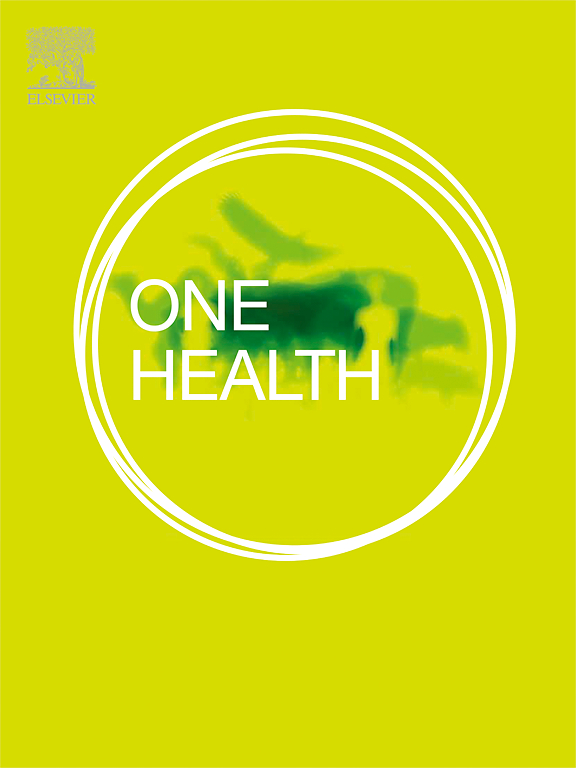法规、生物安全措施和COVID-19的影响:在孟加拉国传统湿动物和活动物市场进行的综合混合方法研究
IF 4.1
2区 医学
Q1 INFECTIOUS DISEASES
引用次数: 0
摘要
传统的湿活动物市场(twlam)以可承受的价格向消费者提供新鲜蔬菜、肉类、鱼类和活体动物。TWLAMs的日常运作对于通过控制和防止食源性病原体污染来提供安全食品至关重要。目的在10个农村地区开展了一项横断面研究,收集和评估市场法规、生物安全措施以及COVID-19对粮食供应和生计的影响方面的数据。方法对40名关键举报人进行访谈和现场观察。此外,我们还组织了一个讲习班,与会者包括人类健康、动物健康、食品安全、人畜共患疾病、农业、消费者权利和市场法规方面的专家。结果在10个被调查的TWLAMs中,5个(50%)由城市公司管理,6个(60%)有书面的操作指南,而40%不知道任何政府法规。大多数市场(80%,n = 8)缺乏商店的直接供水管道,50%的市场没有功能性排水系统。大多数(55%,n = 22)的关键举报人报告说,在过去三个月内没有在市场上看到任何食品检查员。只有60% (n = 24)的人认为活的动物可以在菜市场将疾病传染给人类。虽然店铺一级的清洁工作定期进行,但整个市场的清洁工作却很少进行。新冠肺炎疫情对TWLAM既有负面影响,也有积极影响。最常见的负面影响是失业(65%)和生活费用增加(67%),而COVID-19导致市场卫生(100%),个人卫生(100%)和遵守社交距离(100%)的改善。在2019冠状病毒病大流行期间,TWLAM没有报告永久关闭或禁止动物交易。所有研讨会参与者(n = 55)都表示,由于文化规范和实践的原因,从活体动物交易转向加工动物产品将具有挑战性。尽管存在许多挑战和不足,但制定独特的操作指南可以帮助确保向消费者提供安全食品。财政奖励、认证、培训和定期监测可以改善与食品安全有关的做法。本文章由计算机程序翻译,如有差异,请以英文原文为准。
Regulations, biosecurity measures, and impact of COVID-19: A comprehensive mixed method study in traditional wet and live animal markets in Bangladesh
Background
Traditional wet and live animal markets (TWLAMs) offer fresh vegetables, meat, fish, and live animals to consumers at affordable prices. The daily operation of TWLAMs is crucial for supplying safe food by controlling and preventing contamination from food-borne pathogens.
Objectives
A cross-sectional study was conducted in 10 TWLAMs to collect and assess data on market regulations, biosecurity measures, and the impact of COVID-19 on food supply and livelihoods.
Methods
We interviewed 40 key informants and performed on-site observations. Additionally, we organized a workshop with different stakeholders including experts in human health, animal health, food safety, zoonotic diseases, agriculture, consumer rights, and market regulations.
Results
Among the 10 surveyed TWLAMs, five (50 %) were governed by the City Corporation, six (60 %) had written operational guidelines, while 40 % were unaware of any government regulations. Most markets (80 %, n = 8) lacked direct water supply lines for their shops, and 50 % had no functional drainage systems. A majority (55 %, n = 22) of the key informants reported not seeing any food inspectors at the market within the last three months. Only 60 % (n = 24) believed that live animals could transmit diseases to humans within wet markets. While shop-level cleaning was regularly conducted, cleaning of the entire market was infrequent. COVID-19 had both negative and positive impacts on TWLAM. The most common negative effects were job losses (65 %) and increased living expenses (67 %), while COVID-19 led to improvements in market hygiene (100 %), personal hygiene (100 %), and adherence to social distancing (100 %). No permanent closures or bans on animal trading were reported in TWLAM during the COVID-19 pandemic. All workshop participants (n = 55) indicated that shifting from live animal trading to processed animal products would be challenging due to cultural norms and practices.
Conclusions
Despite many challenges and shortcomings, a unique operational guideline could help ensure the supply of safe food to consumers. Financial incentives, certification, training, and regular monitoring can improve practices associated with food safety.
求助全文
通过发布文献求助,成功后即可免费获取论文全文。
去求助
来源期刊

One Health
Medicine-Infectious Diseases
CiteScore
8.10
自引率
4.00%
发文量
95
审稿时长
18 weeks
期刊介绍:
One Health - a Gold Open Access journal.
The mission of One Health is to provide a platform for rapid communication of high quality scientific knowledge on inter- and intra-species pathogen transmission, bringing together leading experts in virology, bacteriology, parasitology, mycology, vectors and vector-borne diseases, tropical health, veterinary sciences, pathology, immunology, food safety, mathematical modelling, epidemiology, public health research and emergency preparedness. As a Gold Open Access journal, a fee is payable on acceptance of the paper. Please see the Guide for Authors for more information.
Submissions to the following categories are welcome:
Virology,
Bacteriology,
Parasitology,
Mycology,
Vectors and vector-borne diseases,
Co-infections and co-morbidities,
Disease spatial surveillance,
Modelling,
Tropical Health,
Discovery,
Ecosystem Health,
Public Health.
 求助内容:
求助内容: 应助结果提醒方式:
应助结果提醒方式:


